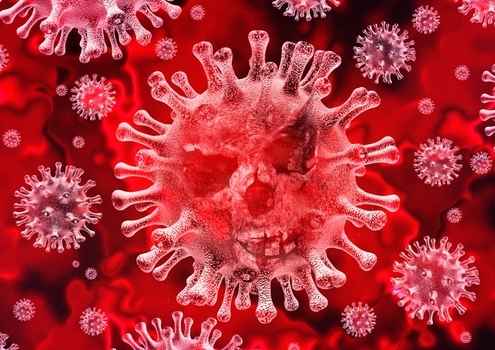|
#6
|
|||
|
|||
|
Swine flu
 Swine flu or the H1N1 influenza A virus affected humans for the first time in 2009 and WHO declared it as a pandemic in 2010. But globally, people have now developed immunity against this virus. So, itís no more a cause of major concern. Now, the H1N1 virus is like any other regular human flu virus that affects us during the flu season. What is Swine Flu? The H1N1 type A influenza is a viral infection which originally was transmitted from pigs to humans. Now, it spreads from one human to another. The symptoms of swine flu are very similar to regular influenza and include fever, headaches, chills, diarrhoea, coughing and sneezing. One can prevent the infection by maintaining basic hygiene and wearing a proper surgical mask during flu season. The number of cases shoots up during the summers and monsoon seasons. While there are various vaccines available to prevent the disease, a wide range of antiviral treatments are there to combat it as well. One should however only opt for these medicines under a doctorís supervision as indiscriminate use might result in susceptibility to the virus. |
|
#7
|
|||
|
|||
|
Malaria
 According to the World Malaria Report 2019 of the World Health Organization (WHO), there were about 228 million cases of this disease in 2018 worldwide. The report estimates that the global death burden of malaria was 405000 in the year. It also reveals that 19 countries in sub-Saharan Africa and India carried almost 85% of the global malaria burden in 2018. There are flour types of parasites that can cause this mosquito-borne disease. One of them, known as Plasmodium falciparum, was highly prevalent in the WHO African region (99.7% cases) and South East Asian region (50% cases) in 2018. The incidence of P. vivax, another malaria-causing parasite was also high in the later (53% of the global burden) in the year. Out of the total number of P. vivax malaria cases in South East Asia, the majority were from India (47%) in 2018. What is Malaria? Malaria is a mosquito-borne parasitic disease characterised by high fever and chills. Transmitted through the bite of infected Anopheles mosquitoes, it can be caused by four parasites: Plasmodium (P) vivax, P. ovale, P. malariae, and P. falciparum. However, there can be other modes of transmission too. You can catch malaria if you are exposed to infected blood during transfusion or while sharing needles to inject drugs. A mother can also pass it on to the child at birth. The malaria parasites march to your liver after they sneak into your body. After maturing over there, they enter the bloodstream after a few days and attack your red blood cells. Once inside the red blood cells, these parasites take 48 to 72 hours to multiply. This makes your infected cells burst open. You start experiencing the symptoms of malaria as this process continues. P. falciparum leads to the most severe form of malaria. It can be fatal too. |
|
#8
|
|||
|
|||
|
HIV (human immunodeficiency virus) is a virus that attacks the body’s immune system. If HIV is not treated, it can lead to AIDS (acquired immunodeficiency syndrome). Learning the basics about HIV can keep you healthy and prevent HIV transmission. You can also download materials to share or watch videos on basic information about HIV.
 What is HIV?
|
|
#9
|
|||
|
|||
|
Coronavirus disease (COVID-19) is an infectious disease caused by a newly discovered coronavirus. Most people infected with the COVID-19 virus will experience mild to moderate respiratory illness and recover without requiring special treatment. Older people, and those with underlying medical problems like cardiovascular disease, diabetes, chronic respiratory disease, and cancer are more likely to develop serious illness.
 The best way to prevent and slow down transmission is to be well informed about the COVID-19 virus, the disease it causes and how it spreads. Protect yourself and others from infection by washing your hands or using an alcohol based rub frequently and not touching your face. The COVID-19 virus spreads primarily through droplets of saliva or discharge from the nose when an infected person coughs or sneezes, so it’s important that you also practice respiratory etiquette (for example, by coughing into a flexed elbow). |
|
#10
|
|||
|
|||
|
Fatty liver disease
 Fatty liver simply means accumulation of fat in the liver. Normal, healthy liver has no fat. It is unclear where the fat comes from. It may be acquired from other parts of the body or the liver may be absorbing an increased amount of fat from the intestine. It could also be possible to explain fat accumulation, if the liver loses its ability to change fat into a form that can be eliminated. Types Fatty liver disease can be divided into 2 types – alcohol related and non-alcohol related. Alcoholic fatty liver disease: It is caused due to heavy alcohol drinking. Alcohol, in general, is bad for the liver because it diverts the liver from its major function of metabolising carbohydrates and providing glucose throughout the body. It destroys the liver cells resulting in fat deposits, causing alcoholic fatty liver disease. The fat in the liver can progressively cause inflammation and scarring of the liver, resulting in cirrhosis Non-alcoholic fatty liver disease: There are 3 stages of non alcohol related fatty liver disease
|